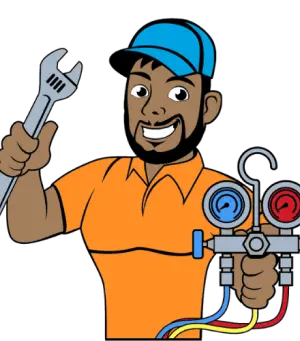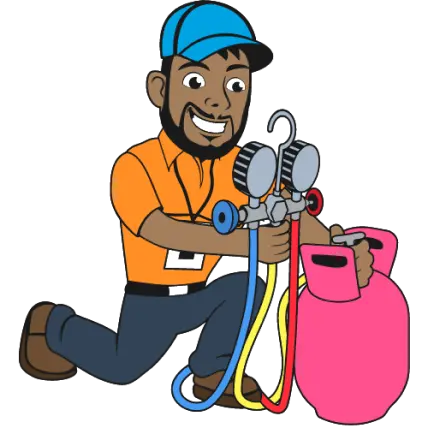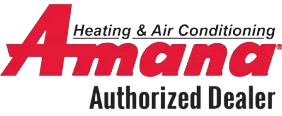When your air conditioner refuses to start during a sweltering San Antonio summer, the discomfort sets in fast. For many homeowners, this is a moment of stress and urgency—especially when temperatures soar above 100°F. If you’re asking yourself, “why won’t my AC turn on?” you’re not alone. The good news is that many common causes are simple and can often be resolved with a few safe checks.
In this guide, we’ll walk you through how to diagnose and fix common AC startup issues at home. Whether you’re dealing with a sudden outage or trying to figure out how to turn on AC after months of downtime, we’ll help you troubleshoot smartly—and know when it’s time to call in a professional.
Common Reasons Your AC Won’t Turn On (and How to Troubleshoot Them)
Not all air conditioning problems require an HVAC technician. In fact, many AC units fail to turn on due to minor issues that are safe and easy for homeowners to check themselves. Below are the most common culprits behind an unresponsive AC unit, plus actionable steps you can take to restore your comfort.
Thermostat Problems
Your thermostat acts as the control center of your AC system. If it isn’t working properly, your air conditioner won’t know when to turn on—even if everything else is in perfect condition.
Common Issues:
- Incorrect settings: Make sure the thermostat is set to “Cool” and that the temperature setting is at least 5°F below the current room temperature.
- Dead batteries: A blank or dim display often signals that the batteries need replacing.
- Internal failure or loose wiring: If the display is active but the AC doesn’t respond, the wiring or internal relays may be faulty.
Homeowner Troubleshooting Tips:
- Replace the batteries with fresh ones.
- Reset the thermostat by turning it off, waiting 1–2 minutes, and turning it back on.
- Verify the temperature and fan mode settings.
- If you’re comfortable, check for loose wiring (after turning off the power at the breaker).
If these steps don’t resolve the issue, the thermostat itself may need professional inspection or replacement.
Power Supply Issues
Air conditioners require uninterrupted power from both indoor and outdoor units. If your AC has no power, it won’t respond at all—even if the thermostat is calling for cooling.
Common Causes:
- Tripped circuit breaker: Overloads or power surges can trip the breaker.
- Shut-off switches turned off: The outdoor unit disconnect or indoor furnace switch may have been accidentally turned off.
- Blown fuses: Especially common in older systems or during extreme heat waves.
- Clogged condensate line: This can trigger a float switch that cuts power to prevent water damage.
Safe Checks You Can Perform:
- Inspect the main breaker panel and reset any tripped AC breakers.
- Make sure the switch near your indoor unit (it often looks like a light switch) is turned on.
- Check that the outdoor disconnect is fully engaged.
- Look in the drain pan under your indoor unit—standing water suggests a clogged drain line. Use a wet/dry vacuum to remove the blockage at the outdoor drain outlet.
If power is restored and your AC still doesn’t respond after a few minutes (modern systems often have a built-in delay), proceed to the next troubleshooting step.
Clogged Air Filters & Airflow Obstructions
Airflow is the lifeblood of your AC system. If the air filter is clogged, your system may overheat, freeze up, or even shut down as a built-in safety measure—all of which can prevent your AC from turning on.
Why This Happens:
- A dirty filter restricts airflow, which can cause your evaporator coil to freeze.
- Overheating due to lack of airflow may trip internal safety switches or circuit breakers.
- In high-use areas like San Antonio, filters can get dirty faster due to dust, pollen, and long cooling seasons.
What You Can Do:
- Locate your air filter (typically behind a return grille or in the air handler) and slide it out.
- If it looks gray, dusty, or clogged, replace it with a clean filter of the same size.
- During peak summer months in Texas, check filters monthly and replace them every 30–60 days for optimal performance.
- If the indoor coil has frozen (you’ll see ice on the copper refrigerant lines), turn off the system and let it defrost before restarting. Running it with a frozen coil can cause serious damage.
A clean air filter not only helps your system start and run smoothly—it also improves your indoor air quality and energy efficiency.
Mechanical Failures
When simple fixes like resetting the breaker or replacing the thermostat batteries don’t work, your AC might have a mechanical issue. These components wear down over time, especially in regions like San Antonio where systems run hard for many months each year.
Most Common Mechanical Failures:
- Bad capacitor: A failed capacitor will prevent the outdoor unit from starting and may cause a buzzing sound.
- Burned-out fan motor: The fan won’t spin even though the unit receives power.
- Failed contactor or relay: Your system won’t respond to the thermostat’s call to cool.
- Faulty compressor: In severe cases, the heart of your AC system may be damaged.
Warning Signs:
- Buzzing or clicking sounds from the outdoor unit
- Fan blades that won’t spin
- Breakers that trip repeatedly
- Unit starts, then shuts off after a few seconds (short cycling)
Homeowner Tip: These parts involve high-voltage electricity and should never be replaced by homeowners. If you notice any of the symptoms above, it’s time to call an HVAC technician. Continuing to run your system could lead to more extensive and expensive damage.
How to Safely Turn On Your AC After It’s Been Idle
If you’re starting your system after winter or a long period of disuse, there are a few best practices to avoid damaging your AC.
Pre-Start Checklist:
- Set the thermostat to “Cool” and a few degrees below the current room temperature.
- Inspect and replace the air filter.
- Ensure the outdoor unit is free of leaves, dirt, or other debris.
- Check that the circuit breakers and disconnect switches are on.
- Make sure the indoor access panel is securely closed—many systems won’t run if it’s ajar.
Important Note on Delays:
Many modern air conditioners have built-in delay mechanisms to protect the compressor. If your system doesn’t start immediately after power is restored, wait up to 5–10 minutes before trying again. This delay is normal and helps extend the life of your equipment.
When It’s Time to Call Comfort Tech
If you’ve walked through all the safe troubleshooting steps—checked the thermostat, replaced the filter, reset the breakers, and ensured the system has power—and your AC still refuses to turn on, it’s time to bring in the pros.
Situations That Require a Technician:
- AC is completely unresponsive after restoring power
- You hear unusual sounds like buzzing, clicking, or humming
- Breakers trip repeatedly when the system tries to start
- Ice is forming on the refrigerant lines or indoor coil
- There’s water in the drain pan or signs of a leak
- You suspect a capacitor, compressor, or motor failure
Why Choose Comfort Tech in San Antonio:
- 24/7 emergency repair service
- Fully licensed, insured, and certified technicians
- Local expertise tailored to San Antonio’s climate
- Honest diagnostics and transparent pricing
When your AC won’t turn on—and you’ve exhausted the homeowner-safe options—Comfort Tech is ready to restore your comfort quickly and reliably.
How to Prevent AC Shutdowns in the Future
Avoiding surprise breakdowns starts with smart maintenance habits. San Antonio’s hot, demanding climate puts your HVAC system through long hours of use—so it’s critical to take a proactive approach.
Replace Filters Regularly
- Replace air filters every 30–60 days during peak usage
- Check monthly if you have pets or allergies
- Use quality pleated filters for better filtration and airflow
Clear and Clean Outdoor Unit
- Keep 2–3 feet of clearance around the condenser
- Gently hose off dirt and debris from the coils each season
- Never stack objects or plant shrubs too close to the unit
Flush the Condensate Drain Annually
- Use a wet/dry vacuum or pour vinegar into the drain line to prevent clogs
- Clean pans and float switches to ensure moisture drains properly
Schedule an Annual HVAC Tune-Up
- Spring or early summer is the best time in San Antonio
- Technicians inspect electrical components, test refrigerant levels, clean coils, and more
- Prevents surprise failures and helps your system run efficiently
FAQs: Quick Answers to Common AC Startup Issues
Why is my AC completely dead and unresponsive?
Likely causes include a tripped breaker, blown fuse, or float switch triggered by a clogged drain line. Check power sources and the thermostat first.
How do I know if my thermostat is the problem?
If it’s blank, try replacing the batteries. If it’s lit but unresponsive, verify settings and try resetting it. If that fails, it may require professional replacement.
Can a dirty filter really stop my AC from turning on?
Yes! Severe clogs can cause the system to overheat or freeze up, which may trigger safety shutoffs.
Is it safe to hose down the outdoor unit?
Yes—just turn off the power first. Use a garden hose to rinse off debris, avoiding high pressure or internal components.
What’s the first thing I should check when my AC won’t turn on?
Start with the thermostat settings, then check your breakers, air filter, and drain pan. These are the most common and easily fixable issues.
Stay Cool with Comfort Tech
AC Still Not Turning On? Let Us Take It from Here.
If your air conditioner won’t start—and you’ve tried everything you safely can—don’t sweat it. Comfort Tech’s expert HVAC technicians are available 24/7 to get your system back up and running fast.
We understand how critical cooling is in San Antonio’s heat. That’s why we offer fast response times, honest diagnostics, and professional service backed by decades of experience.
Contact Comfort Tech Today For HVAC Help
📍 Service Area:
Proudly serving San Antonio, TX and surrounding communities
📞 Call us today:
(210) 920-4645
🌐 Website:
www.comforttechsac.com





